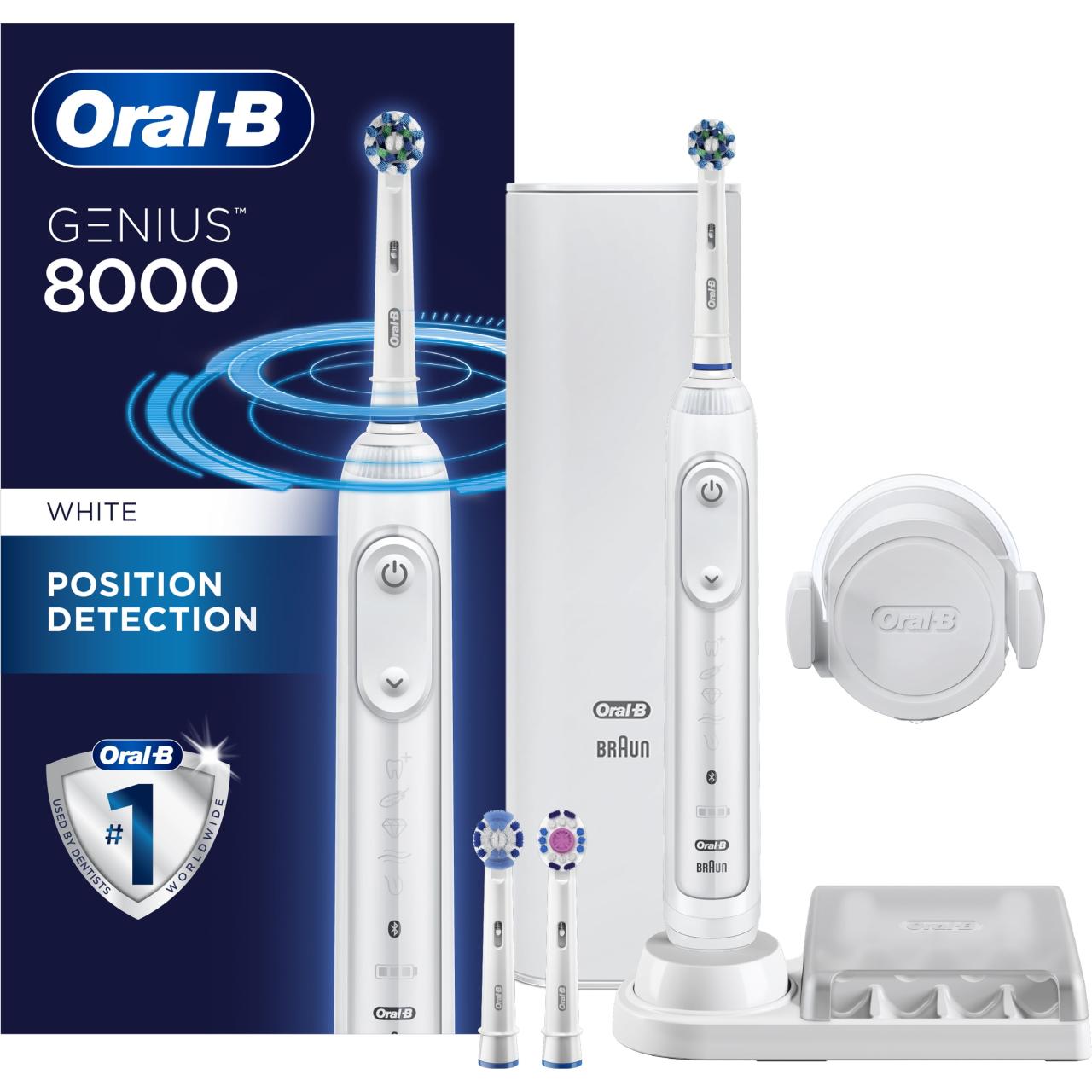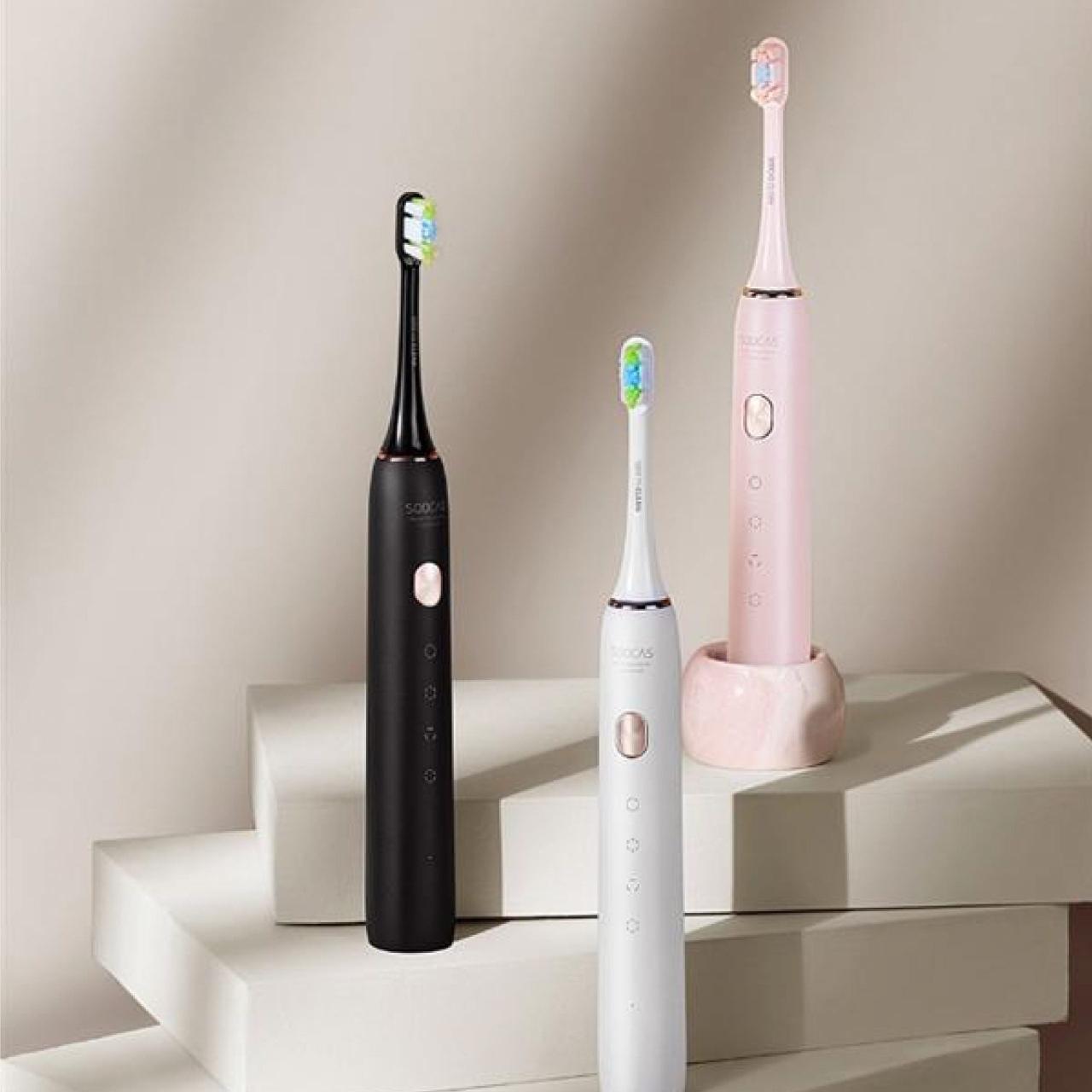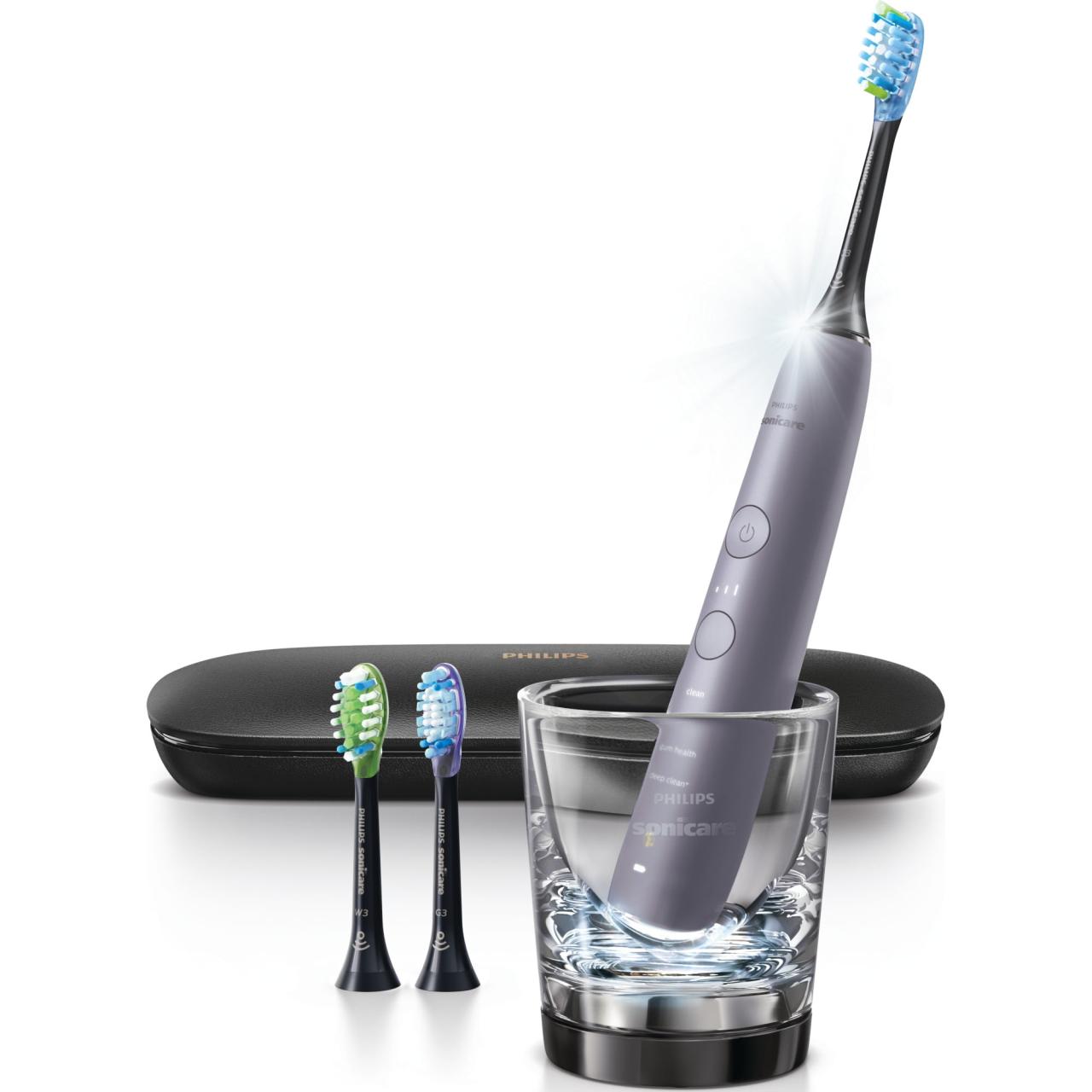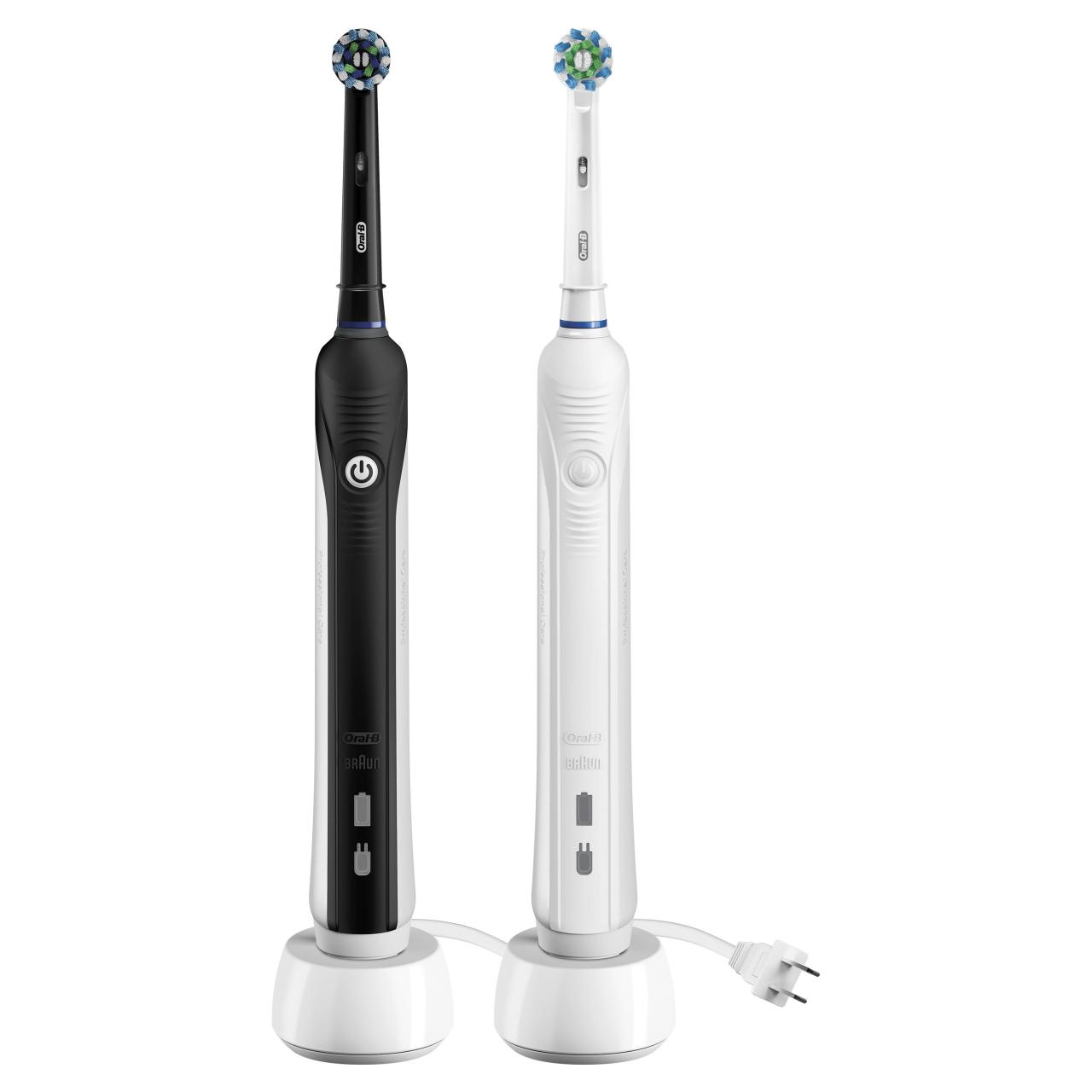The humble toothbrush has undergone a dramatic transformation, evolving from a simple manual tool to a sophisticated device that promises a more thorough and effective clean. Electric toothbrushes, once a niche product, have become a staple in many households, offering a range of benefits for individuals of all ages.
But with a plethora of models available, choosing the right electric toothbrush can be a daunting task. This comprehensive guide delves into the world of electric toothbrushes, exploring their mechanisms, benefits, features, and considerations for selecting the best option for your unique needs.
From the science behind their cleaning action to the latest technological advancements, this guide provides a comprehensive overview of electric toothbrushes, empowering you to make informed decisions about your oral health.
Electric Toothbrush Basics

Electric toothbrushes have become increasingly popular as a more effective way to clean teeth compared to manual toothbrushes. They use a variety of technologies to remove plaque and bacteria, resulting in improved oral hygiene.
Types of Electric Toothbrushes
The primary types of electric toothbrushes available are sonic, oscillating-rotating, and ultrasonic toothbrushes. Each type employs a distinct mechanism for cleaning teeth.
- Sonic Toothbrushes: Sonic toothbrushes use high-frequency vibrations to create a powerful cleaning action. The brush head oscillates at a high speed, generating sound waves that dislodge plaque and bacteria from the teeth.
- Oscillating-Rotating Toothbrushes: These toothbrushes feature a brush head that rotates and oscillates, effectively cleaning teeth and gum lines. The rotating motion removes plaque, while the oscillating motion helps to reach hard-to-reach areas.
- Ultrasonic Toothbrushes: Ultrasonic toothbrushes utilize high-frequency sound waves to break down plaque and bacteria. They work by emitting sound waves that are beyond the range of human hearing, creating microbubbles that effectively remove plaque and debris from teeth.
Effectiveness of Electric Toothbrushes
Numerous studies have demonstrated that electric toothbrushes are more effective than manual toothbrushes in removing plaque and improving oral hygiene.
A study published in the Journal of Clinical Periodontology found that electric toothbrushes were more effective than manual toothbrushes in reducing plaque and gingivitis.
Electric toothbrushes provide several advantages over manual toothbrushes, including:
- Improved Plaque Removal: The powerful cleaning action of electric toothbrushes effectively removes plaque and bacteria from teeth, leading to improved oral health.
- Reduced Gingivitis: Electric toothbrushes can help reduce gingivitis (gum inflammation) by removing plaque and bacteria from the gum line.
- Easier to Use: Electric toothbrushes are often easier to use than manual toothbrushes, particularly for individuals with dexterity issues.
- Improved Brushing Technique: Electric toothbrushes often feature timers and pressure sensors that help users maintain proper brushing techniques and avoid over-brushing.
Benefits of Electric Toothbrushes
Electric toothbrushes have gained immense popularity in recent years, becoming a staple in many households. They offer numerous advantages over manual toothbrushes, contributing to improved oral hygiene and overall health.
Improved Plaque Removal
Electric toothbrushes are significantly more effective at removing plaque than manual toothbrushes. The oscillating or rotating brush heads reach hard-to-access areas, such as the back of teeth and along the gum line, where manual brushing often falls short. Studies have shown that electric toothbrushes can remove up to 75% more plaque than manual brushes.
Enhanced Gum Health
Electric toothbrushes are gentler on gums compared to manual brushing, which can sometimes cause irritation or damage. The soft bristles and controlled movements of electric toothbrushes minimize the risk of gum recession and bleeding.
Improved Whitening
Electric toothbrushes can contribute to a brighter smile by effectively removing surface stains. The consistent brushing action and the use of whitening toothpaste can lead to a noticeable difference in teeth color over time.
Benefits for Individuals with Specific Dental Needs
Braces
Electric toothbrushes are particularly beneficial for individuals with braces. The brush heads can easily maneuver around the brackets and wires, ensuring thorough cleaning and preventing plaque buildup.
Gum Disease
Electric toothbrushes are recommended for individuals with gum disease, as they help remove plaque and bacteria more effectively than manual brushes. This can slow down the progression of gum disease and prevent further damage.
Sensitive Teeth
Some electric toothbrushes offer settings specifically designed for sensitive teeth. These settings provide a gentler brushing experience, reducing discomfort and irritation.
Benefits for Children and the Elderly
Children
Electric toothbrushes can make brushing more fun and engaging for children, encouraging them to develop good oral hygiene habits from a young age. Some electric toothbrushes come with fun characters or features that appeal to children.
Elderly
Electric toothbrushes can be beneficial for elderly individuals who may have difficulty holding and maneuvering a manual toothbrush due to dexterity issues. The automated brushing action makes it easier for them to maintain good oral hygiene.
Choosing the Right Electric Toothbrush

Navigating the world of electric toothbrushes can be overwhelming, with a wide range of models and features to choose from. Selecting the right electric toothbrush for your needs and preferences is essential for optimal oral health and a satisfying brushing experience.
Understanding Different Brush Head Types
The brush head is the part of the electric toothbrush that comes into contact with your teeth. Different brush head types are designed to address specific oral health concerns and preferences.
- Soft-bristled brush headsare gentle on gums and ideal for people with sensitive teeth.
- Medium-bristled brush headsoffer a more thorough cleaning experience, suitable for individuals with plaque buildup or stained teeth.
- Hard-bristled brush headsare not recommended for regular use, as they can damage gums and enamel.
- Specialized brush headsare available for specific needs, such as whitening, gum care, or cleaning around braces.
The Importance of a Timer
A built-in timer is a crucial feature of any electric toothbrush, ensuring you brush for the recommended two minutes.
- Two-minute timersare standard in most electric toothbrushes, guiding you through a complete brushing session.
- Quadrant timersdivide the two minutes into 30-second intervals, ensuring you spend an equal amount of time on each quadrant of your mouth.
- Smart timerscan connect to your smartphone, providing real-time feedback on your brushing habits and offering personalized recommendations.
The Role of a Pressure Sensor
A pressure sensor helps you avoid brushing too hard, which can damage gums and enamel.
- Pressure sensorstypically light up or vibrate when you apply excessive pressure, alerting you to adjust your brushing technique.
- Some modelsfeature a combination of pressure sensors and smart timers, providing a comprehensive approach to oral hygiene.
Popular Electric Toothbrush Brands and Models
The market for electric toothbrushes is competitive, with a variety of brands offering models with different features and price points.
| Brand | Model | Features | Price Range |
|---|---|---|---|
| Oral-B | iO Series 9 | Smart timer, pressure sensor, artificial intelligence (AI) brushing guidance, multiple brush head options | $400
|
| Philips Sonicare | DiamondClean 9000 | Sonic technology, adjustable intensity settings, smart timer, travel case | $250
|
| Waterpik | Waterpik Sonic Fusion | Sonic technology, water flossing, smart timer, multiple brush head options | $150
|
| Bursh | Sonic Electric Toothbrush | Sonic technology, timer, multiple brush head options | $50
|
Using an Electric Toothbrush Effectively
Electric toothbrushes are a popular choice for oral hygiene, but their effectiveness depends on proper use. This section explores the correct techniques for using an electric toothbrush and the importance of selecting and using the right brush head.
Choosing the Right Brush Head
Selecting the right brush head is crucial for effective brushing. Different brush heads cater to specific needs and oral health conditions. Here’s a guide to choosing the right brush head:
- Soft-bristled brush headsare generally recommended for most people, as they are gentle on gums and enamel.
- Medium-bristled brush headscan be used by individuals with tougher stains or plaque buildup, but they should be used with caution to avoid gum irritation.
- Specialty brush heads, such as those designed for sensitive teeth or for cleaning around braces, are available for specific needs.
Electric Toothbrush Maintenance

Just like any other appliance, electric toothbrushes require regular cleaning and maintenance to ensure they function optimally and remain hygienic. Neglecting these practices can lead to a buildup of bacteria and compromise the effectiveness of your brush.
Cleaning the Electric Toothbrush
Regular cleaning of your electric toothbrush is essential to prevent the accumulation of bacteria and debris. Here’s how to clean your electric toothbrush:
- Rinse the brush head thoroughly after each use.This removes any toothpaste residue, food particles, and bacteria that may have collected on the bristles.
- Remove the brush head and clean it separately.This allows for a more thorough cleaning of the brush head and prevents bacteria from spreading to the handle.
- Clean the handle with a damp cloth.Avoid submerging the handle in water, as this can damage the internal components.
- Use a toothbrush cleaner or cleaning solution.These products are specifically designed to disinfect and clean electric toothbrushes.
- Allow the toothbrush to air dry completely.This prevents mold and mildew growth.
Replacing Brush Heads
Replacing the brush head is a crucial aspect of electric toothbrush maintenance. The bristles wear down over time, becoming less effective at removing plaque and bacteria.
- Replace the brush head every 3 months or sooner if the bristles become frayed or worn.This ensures that your toothbrush continues to effectively clean your teeth.
- Check the manufacturer’s recommendations for brush head replacement.Some manufacturers may recommend replacing the brush head more frequently depending on the type of brush head and your brushing habits.
- Always use genuine replacement brush heads.Using non-genuine brush heads can damage your toothbrush and reduce its effectiveness.
Replacing Batteries and Chargers
Most electric toothbrushes use rechargeable batteries, which have a limited lifespan.
- Check the manufacturer’s instructions for battery life and replacement.The battery life can vary depending on the type of battery and the frequency of use.
- Charge the toothbrush regularly to extend battery life.Avoid letting the battery completely drain before charging, as this can shorten the battery’s lifespan.
- Replace the charger if it malfunctions or becomes damaged.A faulty charger can damage the battery and shorten its lifespan.
Storing the Electric Toothbrush
Proper storage is essential for maintaining the hygiene and longevity of your electric toothbrush.
- Store the toothbrush upright in a dry, well-ventilated area.This prevents the accumulation of moisture and bacteria.
- Avoid storing the toothbrush in a closed container or bathroom cabinet.This can trap moisture and create a breeding ground for bacteria.
- Replace the brush head cover after each use.This helps to keep the brush head clean and prevent it from collecting dust and debris.
Electric Toothbrush Technology
Electric toothbrushes have come a long way since their initial introduction, evolving from simple vibrating devices to sophisticated tools incorporating cutting-edge technology. This evolution has been driven by advancements in motor technology, brush head design, and the integration of smart features, leading to more effective and personalized oral hygiene experiences.
Smart Features in Electric Toothbrushes
The integration of smart features has transformed electric toothbrushes into connected devices that offer personalized brushing experiences and real-time feedback. Bluetooth connectivity allows users to sync their toothbrush with a smartphone app, providing insights into their brushing habits and offering guidance for improvement.
- App Integration:These apps track brushing duration, pressure, and coverage, offering personalized feedback and recommendations. Some apps even incorporate gamification elements to make brushing more engaging.
- Personalized Settings:Advanced electric toothbrushes allow users to customize settings like brushing mode, intensity, and timer to suit their individual needs and preferences.
- Real-Time Feedback:Some models provide real-time feedback through vibrations or visual cues, alerting users to areas they may have missed or where they are applying excessive pressure.
The Future of Electric Toothbrushes
The future of electric toothbrushes promises even more innovative features and personalized experiences. Some potential advancements include:
- Artificial Intelligence (AI):AI-powered toothbrushes could analyze brushing data to identify areas of concern and provide tailored recommendations for improvement.
- Advanced Sensors:More sophisticated sensors could detect plaque and gum health issues, providing early warning signs and promoting proactive oral care.
- Personalized Brushing Programs:AI could create personalized brushing programs based on individual oral health needs and preferences.
- Integration with Other Devices:Future electric toothbrushes might integrate with other smart home devices, such as smart mirrors or voice assistants, for a more seamless and connected oral care experience.
Electric Toothbrush Safety
While electric toothbrushes offer numerous advantages for oral hygiene, it’s crucial to prioritize safety when using them. Understanding the proper techniques and potential risks can ensure a positive experience and prevent any complications.
Safety Tips for Using an Electric Toothbrush
To maximize the benefits of electric toothbrushes while minimizing risks, follow these safety tips:
- Gentle Brushing:Avoid excessive pressure while brushing. Electric toothbrushes do most of the work, so applying too much force can irritate gums and damage tooth enamel.
- Proper Brushing Technique:Hold the toothbrush at a 45-degree angle towards the gum line and use gentle, circular motions. Avoid scrubbing back and forth like a manual toothbrush.
- Brushing Duration:Most electric toothbrushes have timers built-in to ensure you brush for the recommended two minutes. Don’t exceed the recommended brushing time.
- Avoid Overuse:Brushing too frequently can also irritate gums. Stick to the recommended brushing schedule of twice daily.
- Choose the Right Brush Head:Select a brush head that’s appropriate for your gum sensitivity and oral health needs. Soft-bristled heads are generally recommended, especially for individuals with sensitive gums.
Safety for Children
Children require extra care when using electric toothbrushes.
- Adult Supervision:Children under the age of 8 should always have adult supervision when using an electric toothbrush.
- Child-Sized Toothbrushes:Use electric toothbrushes specifically designed for children, with smaller brush heads and lower speeds.
- Gentle Brushing:Monitor children’s brushing technique to ensure they’re not applying too much pressure.
Safety for Individuals with Sensitive Gums
Individuals with sensitive gums should take extra precautions:
- Soft-Bristled Brush Heads:Always use soft-bristled brush heads to avoid irritation and gum recession.
- Lower Brush Speed:Some electric toothbrushes offer adjustable speed settings. Choose a lower setting to minimize gum irritation.
- Gentle Brushing Technique:Focus on gentle circular motions, avoiding aggressive scrubbing.
- Consult a Dentist:If you have chronic gum sensitivity, consult your dentist for personalized advice and recommendations.
Potential Risks of Improper Use or Faulty Equipment
While electric toothbrushes are generally safe, improper use or faulty equipment can lead to complications:
- Gum Recession:Excessive pressure or aggressive brushing can cause gum recession, exposing the roots of teeth.
- Tooth Enamel Erosion:Using a brush head that’s too hard or brushing too vigorously can wear down tooth enamel, making teeth more susceptible to cavities.
- Gum Irritation:Using an electric toothbrush with a brush head that’s too large or too firm can irritate gums, causing bleeding and discomfort.
- Electric Shock:Faulty electric toothbrushes can pose a risk of electric shock. Inspect the toothbrush regularly for any signs of damage, such as frayed wires or cracks in the casing.
Importance of Choosing Reputable Brands and Following Manufacturer Instructions
Choosing a reputable brand and adhering to the manufacturer’s instructions is crucial for safety:
- Reputable Brands:Choose electric toothbrushes from established brands that have a proven track record of quality and safety.
- Manufacturer Instructions:Read and follow the manufacturer’s instructions carefully, including information on proper use, maintenance, and replacement of brush heads.
- Warranty and Support:Select a brand that offers a warranty and reliable customer support in case of any issues.
Electric Toothbrushes and Oral Health
Electric toothbrushes have revolutionized oral hygiene, offering a more effective and efficient way to maintain a healthy smile. They are particularly beneficial for individuals struggling with gum disease, cavities, and other oral health issues.
Effectiveness of Electric Toothbrushes in Preventing Oral Health Problems
Research consistently demonstrates the superior efficacy of electric toothbrushes compared to manual brushing in preventing gum disease and cavities.
- A 2014 Cochrane review, which analyzed data from 56 studies involving over 45,000 participants, concluded that electric toothbrushes are more effective than manual toothbrushes in reducing plaque and gingivitis (gum inflammation).
- A study published in the Journal of Clinical Periodontology in 2015 found that electric toothbrushes were associated with a 22% reduction in the risk of developing gingivitis.
- A study published in the American Journal of Dentistry in 2014 found that electric toothbrushes were associated with a 15% reduction in the risk of developing cavities.
These studies highlight the significant impact of electric toothbrushes on oral health, particularly in preventing gum disease and cavities.
Electric Toothbrushes and Maintaining a Healthy Smile
Electric toothbrushes play a crucial role in maintaining a healthy smile by:
- Removing Plaque and Bacteria:The oscillating, rotating, or sonic vibrations of electric toothbrushes effectively remove plaque and bacteria from tooth surfaces and along the gum line, which manual brushing may miss.
- Improving Brushing Technique:Electric toothbrushes often feature built-in timers and pressure sensors that guide users to brush for the recommended two minutes and with the appropriate pressure, ensuring a thorough and effective cleaning.
- Reaching Hard-to-Reach Areas:Electric toothbrushes with specialized brush heads, such as those designed for cleaning between teeth or around braces, can effectively reach hard-to-reach areas that manual toothbrushes may struggle to access.
- Enhancing Oral Hygiene Habits:The convenience and effectiveness of electric toothbrushes can motivate individuals to brush more frequently and consistently, contributing to improved oral health.
By removing plaque and bacteria, improving brushing technique, reaching hard-to-reach areas, and promoting consistent brushing habits, electric toothbrushes contribute significantly to maintaining a healthy smile.
Electric Toothbrushes and Sustainability
The rise in popularity of electric toothbrushes has led to a growing concern about their environmental impact. While they offer numerous benefits for oral health, it’s crucial to consider the sustainability of these devices.
Environmental Impact of Electric Toothbrushes
Electric toothbrushes, unlike their manual counterparts, require electricity to operate. This electricity generation often relies on fossil fuels, contributing to greenhouse gas emissions. Moreover, the manufacturing process of electric toothbrushes involves the extraction and processing of raw materials, which can have significant environmental consequences.
Recyclable Materials and Energy-Efficient Designs
Many electric toothbrush manufacturers are now incorporating recyclable materials in their products, reducing the amount of waste generated. These materials include recycled plastic, aluminum, and even biodegradable components. Furthermore, advancements in technology have led to the development of energy-efficient designs that minimize power consumption.
Tips for Choosing Eco-Friendly Electric Toothbrushes
Choosing an eco-friendly electric toothbrush involves considering several factors:
- Look for models made from recycled materials:Opt for toothbrushes with components made from recycled plastic, aluminum, or other sustainable materials. This helps reduce the demand for virgin resources.
- Choose energy-efficient models:Look for toothbrushes with low power consumption and rechargeable batteries. This minimizes electricity usage and reduces your carbon footprint.
- Consider the lifespan of the toothbrush:Invest in a durable and high-quality electric toothbrush that will last longer, reducing the need for frequent replacements.
- Recycle the toothbrush properly:When it’s time to replace your toothbrush, check if your local recycling program accepts electric toothbrushes. If not, consider donating it to a charitable organization.
- Use reusable toothbrush heads:Some manufacturers offer reusable toothbrush heads that can be cleaned and sanitized, reducing the need for disposable replacements.
Minimizing the Environmental Footprint
In addition to choosing an eco-friendly electric toothbrush, there are other steps you can take to minimize its environmental footprint:
- Reduce your energy consumption:Charge your toothbrush using renewable energy sources whenever possible.
- Use the toothbrush for the recommended time:Most electric toothbrushes have timers that indicate the optimal brushing duration. Avoid overusing the toothbrush, as this can lead to unnecessary energy consumption.
- Properly dispose of the toothbrush:When the toothbrush reaches the end of its lifespan, dispose of it responsibly. Check with your local recycling program for guidelines on how to recycle electric toothbrushes.
Electric Toothbrushes: A Comparison

Navigating the world of electric toothbrushes can be overwhelming, with a vast array of options available. Choosing the right toothbrush for your needs requires understanding the various types, features, and benefits. This section provides a comprehensive comparison of different electric toothbrushes to help you make an informed decision.
Types of Electric Toothbrushes
The electric toothbrush market offers several types, each with its unique advantages and disadvantages. Understanding these differences is crucial for choosing the best option for your oral health needs.
- Sonic Toothbrushes: Sonic toothbrushes use high-frequency vibrations to remove plaque and bacteria. These vibrations create a powerful cleaning action that can reach even hard-to-reach areas. Sonic toothbrushes are generally more expensive than other types but offer superior cleaning power.
- Rotary Toothbrushes: Rotary toothbrushes use a circular brush head to remove plaque and debris. These brushes are typically less expensive than sonic toothbrushes and are known for their gentle cleaning action. However, they may not be as effective in removing plaque from hard-to-reach areas.
- Oscillating-Rotating Toothbrushes: Oscillating-rotating toothbrushes combine both oscillating and rotating movements to provide a thorough cleaning experience. They are known for their effectiveness in removing plaque and bacteria, making them a popular choice for individuals with sensitive teeth or gum disease.
Comparison of Popular Electric Toothbrush Models
| Model | Type | Features | Price | Performance |
|---|---|---|---|---|
| Oral-B iO Series 9 | Oscillating-Rotating | Artificial Intelligence, Personalized Modes, Pressure Sensor, SmartRing | $300+ | Excellent cleaning performance, advanced features |
| Philips Sonicare DiamondClean 9000 | Sonic | Multiple Brush Heads, AdaptiveClean Technology, Tongue Cleaning Mode | $200+ | Excellent cleaning performance, advanced features |
| Waterpik Sonic Fusion | Sonic | Waterpik Technology, Multiple Brush Heads, Pressure Settings | $150+ | Good cleaning performance, water flossing capability |
| Oral-B Pro 1000 | Rotary | Timer, Pressure Sensor, 2 Brush Heads | $50+ | Good cleaning performance, affordable price |
The Electric Toothbrush Market
The electric toothbrush market is a rapidly growing industry, driven by increasing awareness of oral health and the availability of innovative technologies. According to a report by Statista, the global electric toothbrush market is projected to reach $7.5 billion by 2025.
This growth is fueled by factors such as rising disposable incomes, increasing urbanization, and a growing preference for advanced oral hygiene products.
Outcome Summary
The future of oral hygiene is bright, and electric toothbrushes are leading the charge. With continuous innovation and a growing body of research supporting their effectiveness, electric toothbrushes are not just a trend but a powerful tool for achieving optimal oral health.
By understanding the nuances of this technology and making informed choices, you can unlock the full potential of electric toothbrushes and enjoy a brighter, healthier smile for years to come.

